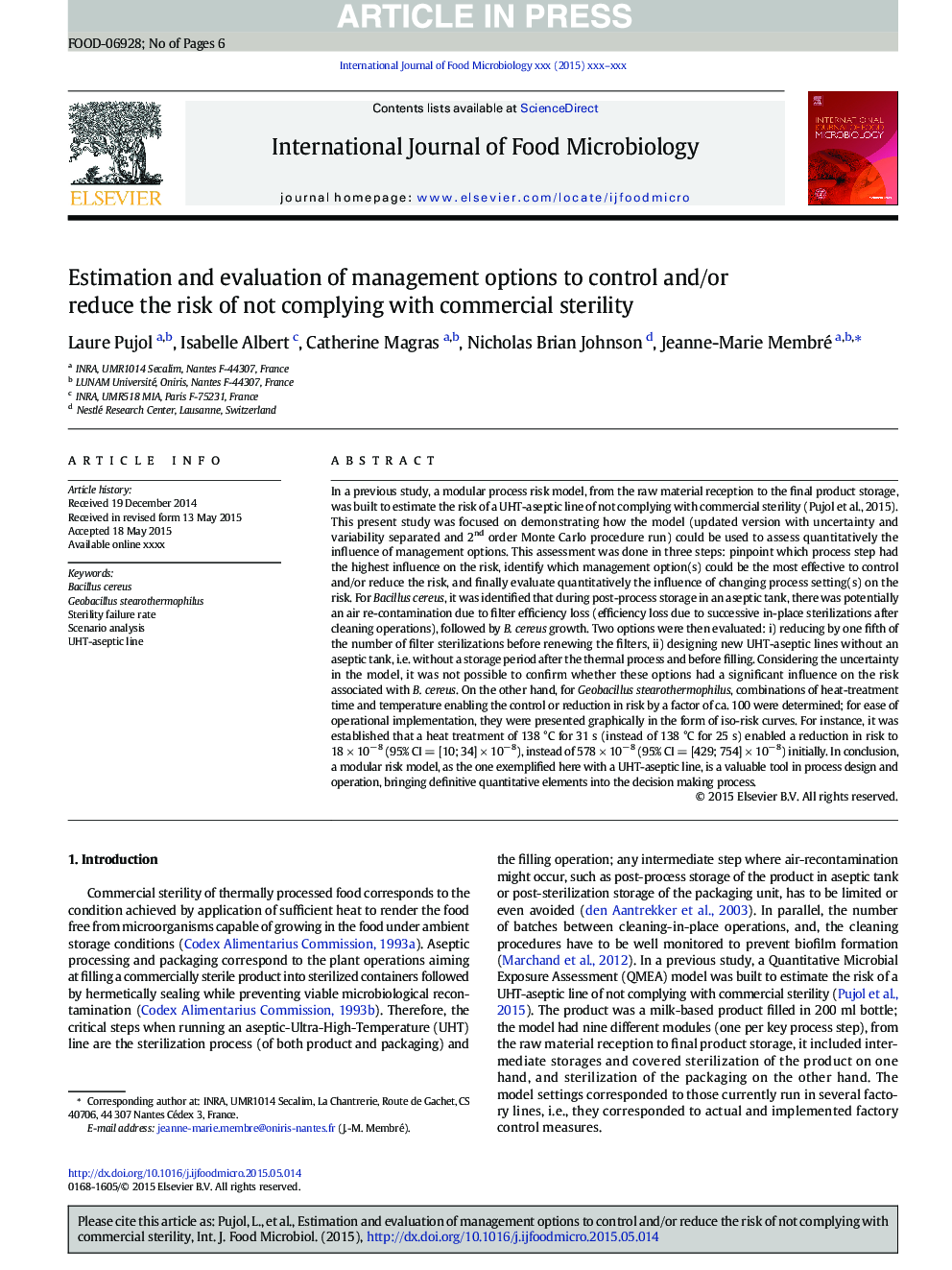| کد مقاله | کد نشریه | سال انتشار | مقاله انگلیسی | نسخه تمام متن |
|---|---|---|---|---|
| 6289873 | 1616570 | 2015 | 6 صفحه PDF | دانلود رایگان |
عنوان انگلیسی مقاله ISI
Estimation and evaluation of management options to control and/or reduce the risk of not complying with commercial sterility
ترجمه فارسی عنوان
ارزیابی و ارزیابی گزینه های مدیریت برای کنترل و / یا کاهش خطر عدم رعایت بی رویه تجاری
دانلود مقاله + سفارش ترجمه
دانلود مقاله ISI انگلیسی
رایگان برای ایرانیان
کلمات کلیدی
موضوعات مرتبط
علوم زیستی و بیوفناوری
علوم کشاورزی و بیولوژیک
دانش تغذیه
چکیده انگلیسی
In a previous study, a modular process risk model, from the raw material reception to the final product storage, was built to estimate the risk of a UHT-aseptic line of not complying with commercial sterility (Pujol et al., 2015). This present study was focused on demonstrating how the model (updated version with uncertainty and variability separated and 2nd order Monte Carlo procedure run) could be used to assess quantitatively the influence of management options. This assessment was done in three steps: pinpoint which process step had the highest influence on the risk, identify which management option(s) could be the most effective to control and/or reduce the risk, and finally evaluate quantitatively the influence of changing process setting(s) on the risk. For Bacillus cereus, it was identified that during post-process storage in an aseptic tank, there was potentially an air re-contamination due to filter efficiency loss (efficiency loss due to successive in-place sterilizations after cleaning operations), followed by B. cereus growth. Two options were then evaluated: i) reducing by one fifth of the number of filter sterilizations before renewing the filters, ii) designing new UHT-aseptic lines without an aseptic tank, i.e. without a storage period after the thermal process and before filling. Considering the uncertainty in the model, it was not possible to confirm whether these options had a significant influence on the risk associated with B. cereus. On the other hand, for Geobacillus stearothermophilus, combinations of heat-treatment time and temperature enabling the control or reduction in risk by a factor of ca. 100 were determined; for ease of operational implementation, they were presented graphically in the form of iso-risk curves. For instance, it was established that a heat treatment of 138 °C for 31 s (instead of 138 °C for 25 s) enabled a reduction in risk to 18 Ã 10â 8 (95% CI = [10; 34] Ã 10â 8), instead of 578 Ã 10â 8 (95% CI = [429; 754] Ã 10â 8) initially. In conclusion, a modular risk model, as the one exemplified here with a UHT-aseptic line, is a valuable tool in process design and operation, bringing definitive quantitative elements into the decision making process.
ناشر
Database: Elsevier - ScienceDirect (ساینس دایرکت)
Journal: International Journal of Food Microbiology - Volume 213, 20 November 2015, Pages 124-129
Journal: International Journal of Food Microbiology - Volume 213, 20 November 2015, Pages 124-129
نویسندگان
Laure Pujol, Isabelle Albert, Catherine Magras, Nicholas Brian Johnson, Jeanne-Marie Membré,
